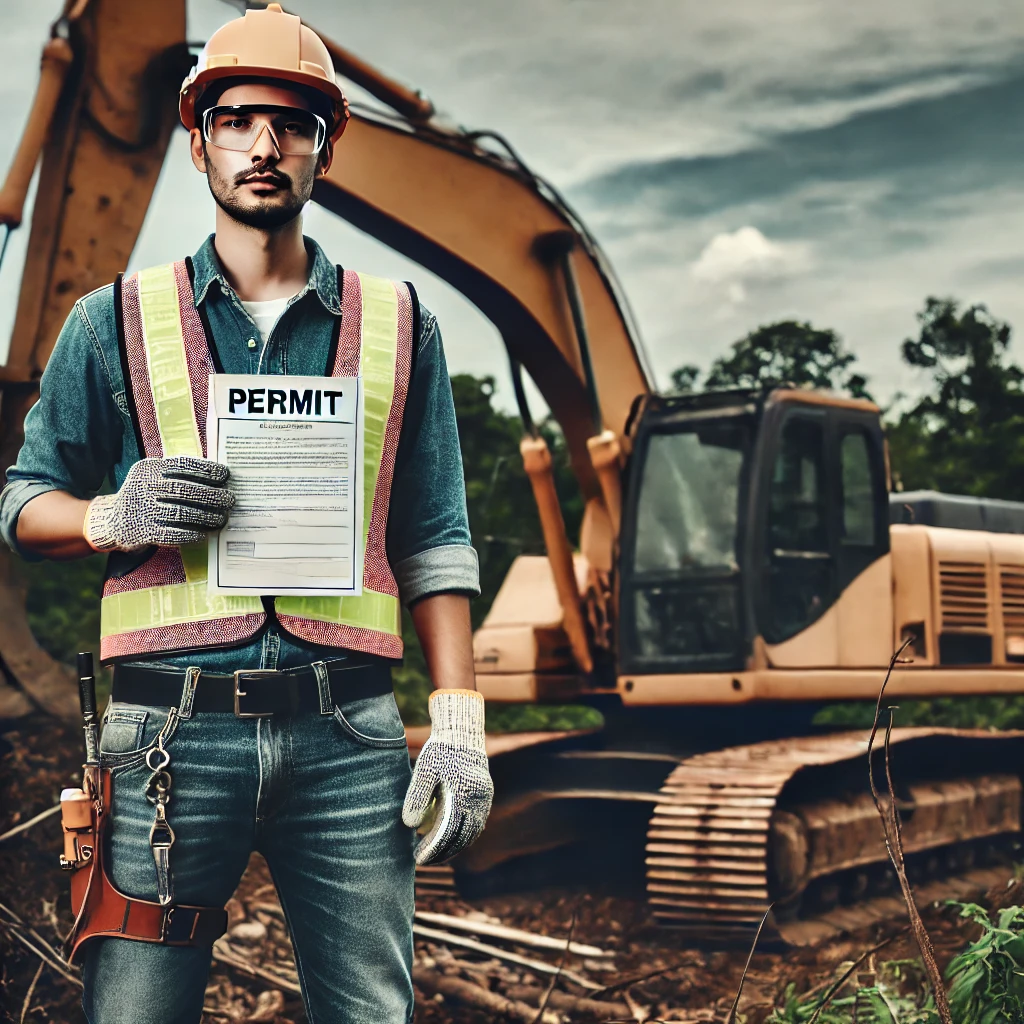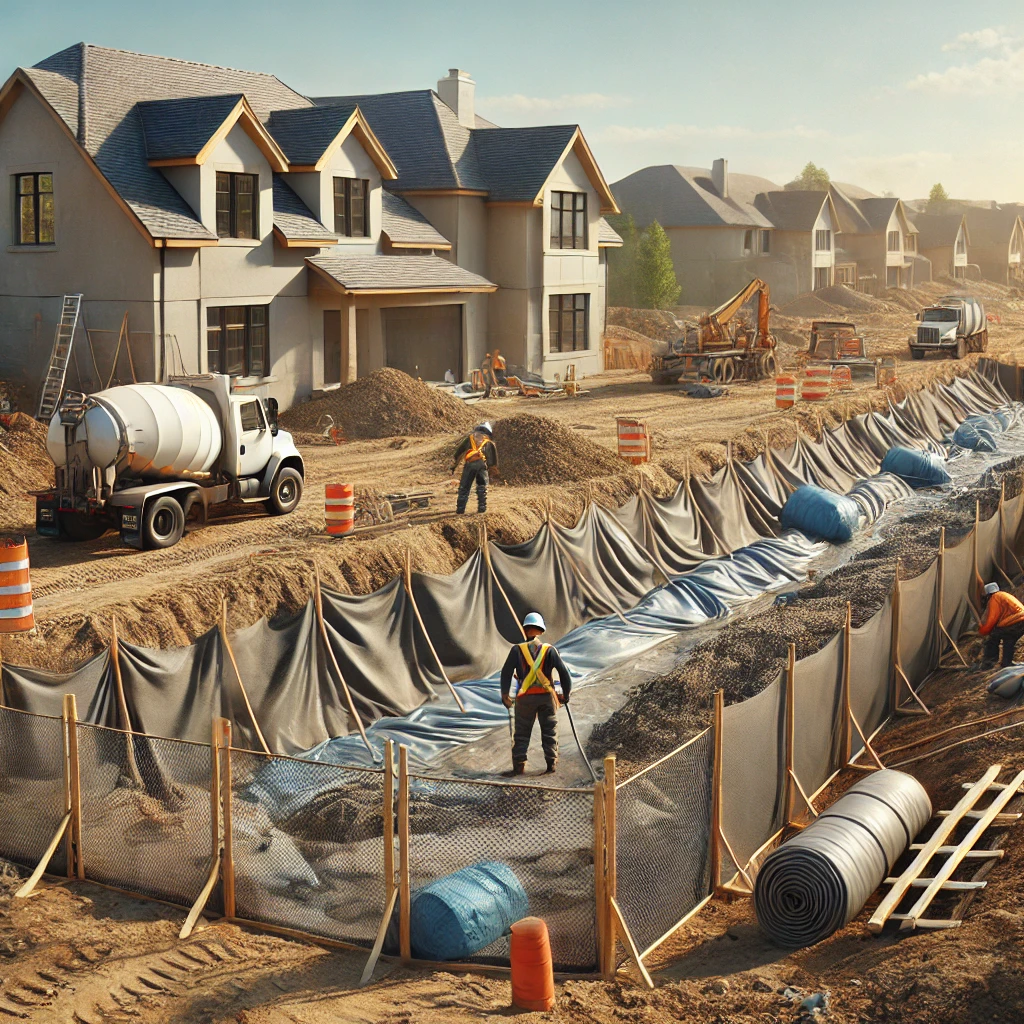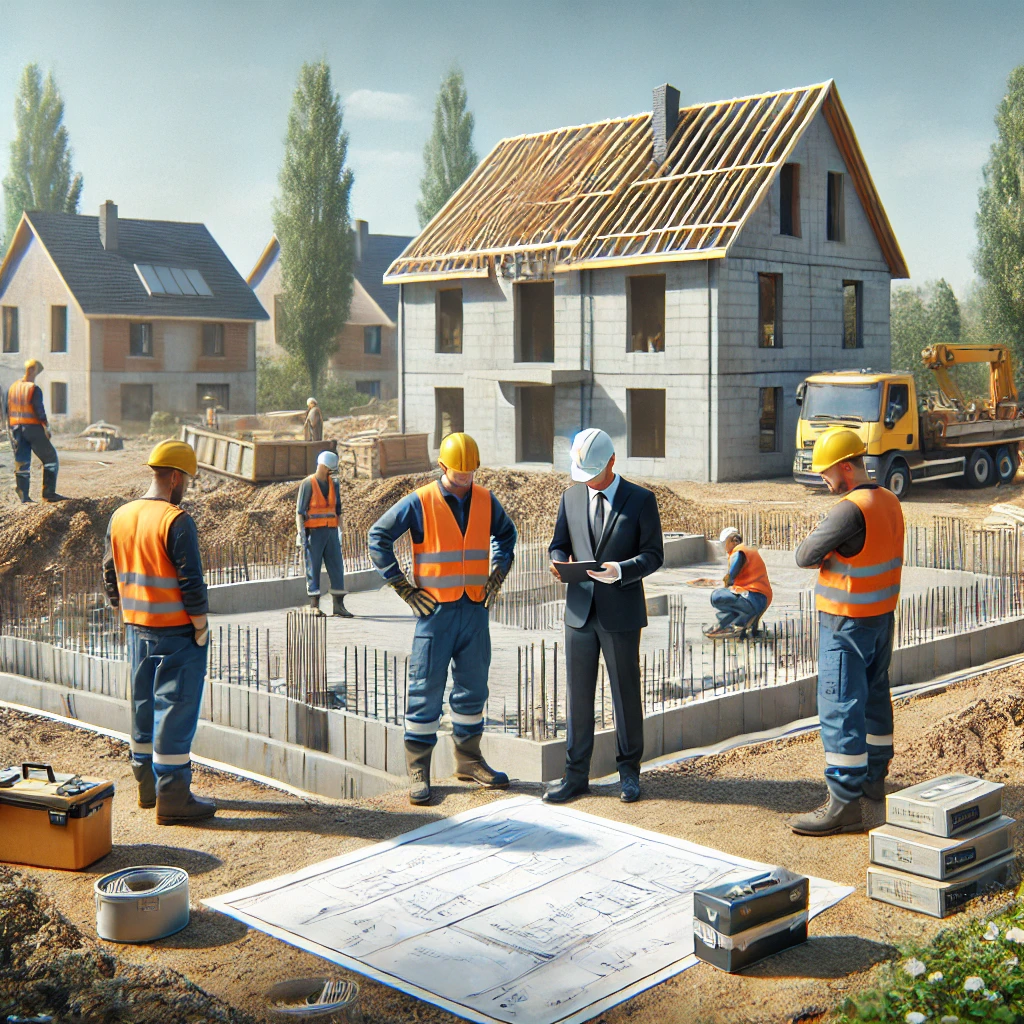Site Preparation Tasks
This section guides you through the **essential steps** of preparing your construction site before breaking ground. Proper **site preparation** ensures that your project runs smoothly, complies with regulations, and sets a strong foundation for your build.
- Track Your Progress: Mark tasks as complete and monitor your site prep progress.
- Stay Notified: Receive alerts for deadlines, inspections, and essential site prep steps.
- Step-by-Step Guidance: Follow clear instructions on boundary verification, zoning compliance, excavation marking, and more.
- Reduce Stress: Stay organized by having all site preparation details in one place.
Whether you’re **building from scratch** or preparing a site for renovation, this section provides everything you need to **manage your project with confidence**.

Survey Details
This section helps you track and complete the necessary tasks to prepare the site for construction. Use this to upload proof and take notes for each task.
Who to Hire:
Licensed Land Surveyor
Cost-Saving Tips:
- Rent surveying equipment if you’re skilled to save on hiring costs.
- Use free/low-cost GIS tools to check boundaries before hiring a surveyor.
Verify Boundary Markers
Verify boundary markers to define the construction area.
Why It Matters: Proper boundary markers ensure the construction area is clearly defined and prevent encroachment issues.
Who to Talk To: Licensed Land Surveyor
Contact Information (E.G. People involved with Task)
Confirm Zoning Compliance
Ensure compliance with local zoning laws.
Why It Matters: Ensures your construction complies with zoning laws and avoids legal issues later.
Who to Talk To: Local building department or zoning office
Contact Information (E.G. People involved with Task)
Mark Excavation Areas
Mark excavation areas with stakes for foundation work.
Why It Matters: Clear marking ensures correct excavation and reduces mistakes during foundation work.
Who to Talk To: Licensed Land Surveyor or construction foreman
Contact Information (E.G. People involved with Task)
Clearing and Demolition
This section focuses on clearing the land and demolishing existing structures to prepare the site for construction. Proper site clearing ensures a **safe, accessible, and build-ready environment**, while demolition removes obstacles that could delay your project.
Who to Hire:
Land Clearing Specialist, Demolition Contractor
Cost-Saving Tips:
- Salvage and sell reusable materials from demolished structures.
- Rent equipment like stump grinders for small-scale clearing to reduce contractor costs.
- Check local programs that may offer free or discounted debris removal services.

Obtain Permits
Obtain permits for tree removal or demolition.
Why It Matters: Ensures your project is legally compliant and avoids fines or delays.
Who to Talk To: Local building department or city council.
Contact Information (E.G. People involved with Task)
Demolish Structures
Tear down existing buildings or structures safely while disposing of materials responsibly.
Why It Matters: Safe and legal demolition prevents hazards, fines, and environmental issues.
Who to Talk To: Demolition contractors and environmental disposal services
Contact Information (E.G. People involved with Task)

Grading and Excavation
This section focuses on grading and excavation tasks. It includes rough grading, trench excavation, and soil testing to prepare the site for construction Use this to upload proof and take notes for each task.
Who to Hire:
Excavator, Soil Testing Specialist
Cost-Saving Tips:
- Combine grading and excavation jobs into a single contract to negotiate discounts
- Use removed soil for landscaping instead of hauling it away.
Perform Rough Grading
Perform rough grading for proper drainage.
Why It Matters: Prevents water drainage issues that can cause foundation damage.
Who to Talk To: Excavation Contractor, Site Engineer.
Contact Information (E.G. People involved with Task)
Excavate Trenches
Excavate trenches for utilities and foundation.
Why It Matters: Proper trenching ensures secure placement of utilities and structural elements.
Who to Talk To: Excavation Contractor, Utility Company.
Contact Information (E.G. People involved with Task)
Conduct Soil Testing
Conduct soil testing for stability.
Why It Matters: Ensures the soil can support the structure without shifting or settling.
Who to Talk To: Geotechnical Engineer, Soil Testing Lab.
Contact Information (E.G. People involved with Task)
Utility Setup
Set up temporary utilities for water, electricity, and waste disposal to ensure smooth construction operations.
Who to Hire:
Utility Installation Contractors
Cost-Saving Tips:
- Use temporary above-ground utility lines to reduce installation costs.
- Rent equipment like stump grinders for small-scale clearing to reduce contractor costs.
- Coordinate utility setup with neighbors for bulk discounts.

Set Up Temporary Water Supply
Set up a temporary water supply for construction use.
Why It Matters: Provides water for construction activities like mixing concrete and cleaning tools.
Who to Talk To: Local water authority, Plumbing Contractor.
Contact Information (E.G. People involved with Task)
Install Temporary Electrical Lines
Install temporary electrical lines to power construction equipment.
Why It Matters: Ensures construction tools and equipment have a reliable power source.
Who to Talk To: Electrician, Utility Company.
Contact Information (E.G. People involved with Task)
Ensure Access to Waste Disposal Facilities
Ensure construction has waste disposal access.
Why It Matters: Prevents construction site clutter and ensures compliance with waste regulations.
Who to Talk To: Waste Management Company.
Contact Information (E.G. People involved with Task)

Erosion and Sediment Control
Implement measures to prevent erosion and sediment displacement. This helps protect the environment during construction. Use this to upload proof and take notes for each task.
Who to Hire:
Erosion Control Specialist
Cost-Saving Tips:
- Use natural barriers like straw bales instead of synthetic options.
- DIY installation of erosion blankets on smaller sites to save on labor costs.
Install Silt Fences and Sediment Barriers
Install silt fences and sediment barriers to prevent erosion.
Why It Matters: Prevents soil erosion and keeps sediment from entering nearby water sources.
Who to Talk To: Environmental Engineer, Site Contractor.
Contact Information (E.G. People involved with Task)
Place Erosion Control Blankets
Place erosion control blankets to stabilize soil and prevent erosion.
Why It Matters: Helps maintain soil stability, preventing washouts and sediment buildup.
Who to Talk To: Landscape Specialist, Erosion Control Contractor.
Contact Information (E.G. People involved with Task)
Monitor and Maintain Control Systems
Monitor and maintain erosion control systems during construction.
Why It Matters: Ensures erosion control measures remain effective throughout construction.
Who to Talk To: Site Supervisor, Environmental Consultant.
Contact Information (E.G. People involved with Task)
Site Inspection
Conduct inspections to ensure the site meets all necessary requirements before proceeding with construction.
Who to Hire:
Local Building Inspector
Cost-Saving Tips:
- Ensure all documents are prepared to avoid reinspection fees.
- Conduct a pre-inspection check yourself or with the contractor to catch issues early.

Schedule Inspection with Local Authorities
Schedule an inspection with local authorities to confirm readiness for construction.
Why It Matters: Confirms that the site meets safety and regulatory standards before construction begins.
Who to Talk To: Local Building Inspector, General Contractor.
Contact Information (E.G. People involved with Task)
Verify Compliance with Requirements
Ensure the project meets all compliance requirements.
Why It Matters: Ensures the project is legally compliant and prevents costly fines or delays.
Who to Talk To: Compliance Officer, Local Planning Department.
Contact Information (E.G. People involved with Task)
Obtain Approval for Foundation Work
Obtain necessary approval for starting foundation work.
Why It Matters: Prevents rework and ensures foundation work starts legally and correctly.
Who to Talk To: Structural Engineer, Local Building Inspector.





